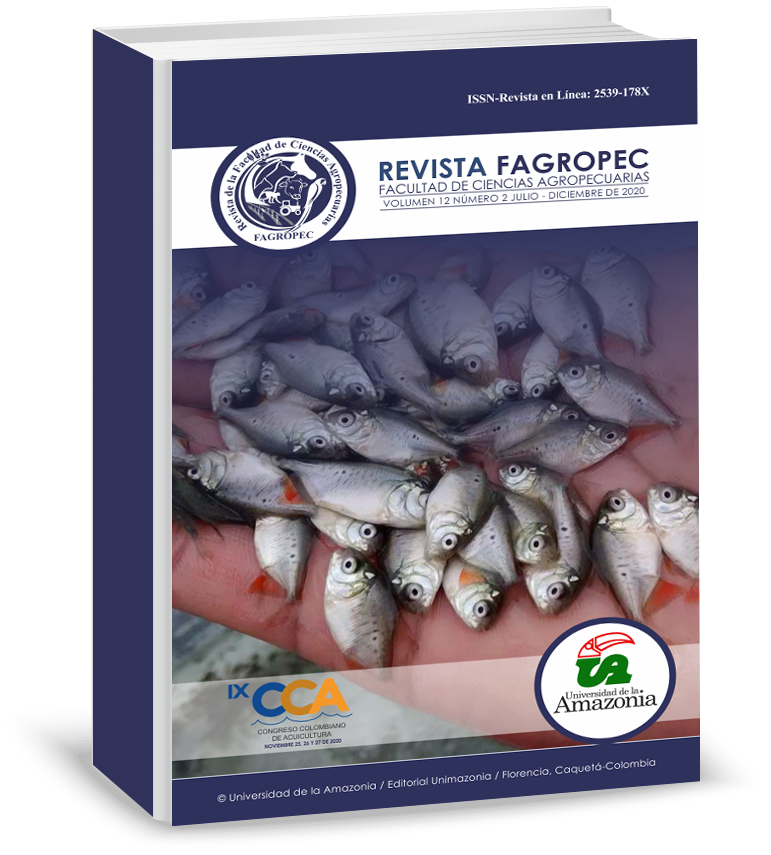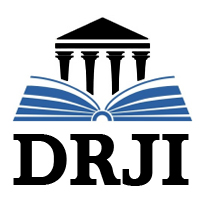The state of agrobiodiversity in coffee production systems in southern Colombia
DOI:
https://doi.org/10.47847/fagropec.v12n2a1Keywords:
Diversity components, indices; frequency, tree species, climate changeAbstract
This research was oriented to estimate the specific diversity state through wealth, variety and equitability indices in coffee production systems in four municipalities of the May, Central and Western subregions of the department of Nariño (Colombia). The information was obtained through field visits during the first semester of 2019 in 100 sampling sites in each municipality. In each farm the tree species were identified and their respective taxonomic classification was carried out. 76 tree species were found within the 400 identified coffee production systems, where 35.5% were present in the four municipalities of a study aim. They belong to 37 families, the Fabaceae family being the most representative and the orange (Citrus x Aurantium) species being the most frequent one, found in 299 farms of the total number assessed. The Unión was established as the municipality with the highest number of species and the highest value of richness indices with the presence of 60 different species, while the lowest corresponds to The Florida and Sandoná. Likewise the Municipality of The Unión obtained the highest diversity values, while The Florida obtained the last position. Regarding the estimation of fairness, the municipality of Sandoná obtained the highest rating followed by The Unión, Consacá and The Florida. The rates indicate that the coffee production systems studied are of a wide variety, which contributes to the mitigation of climate change.
Downloads
References
Anderson, R. y Martínez-Meyer E. (2004). Modeling species geographic distributions for preliminary conservation assessments: an implementation with the spiny pocket mice (Heteromys) of Ecuador. Biological Conservation, 116(2), 167-179. https://doi.org/10.1016/S0006-3207(03)00187-3
Canal, D. y Andrade, H. (2019). Sinergias mitigación - adaptación al cambio climático en sistemas de producción de café Coffea arabica), de Tolima, Colombia. Revista de Biología Tropical, 67(1), 36-46. https://n9.cl/blv4a
Comité de Cafeteros de Nariño - CCN. (2017). Comité de Cafeteros de Nariño. Labores de registro en fincas. Colombia: Sistema de información cafetero (SICA)
De Beenhouwer, M., Geeraert, L., Mertens, J., Maarten, V., Aerts, R., Vanderhaegen, K. y Honnay, O. (2016). Biodiversity and carbon storage co-benefits of coffee agroforestry across a gradient of increasing management intensity in the SW Ethiopian highlands. Agriculture, Ecosystems & Environment, 222, 193-199. https://doi.org/10.1016/j.agee.2016.02.017
FAO – Organización de las Naciones Unidas para la Alimentación y la Agricultura. (2016). Los bosques y la agricultura: desafíos y oportunidades en relación con el uso de la tierra. FAO. https://n9.cl/hgn5
Federación Nacional de Cafeteros de Colombia - Centro Nacional de Investigaciones de Café. (2013.) Manual del cafetero colombiano. Investigación y tecnología para la sostenibilidad de la caficultura. Tomo II. Legis. https://n9.cl/f6f6u
Flores, M., Alegría, J. y Granda, A. (2005). Diversidad florística asociada a las lagunas andinas Pomacocha y Habascoha, Junín, Perú. Revista Peruana de Biología, 12(1), 125-134. https://n9.cl/b6neu
García, E. (2014). Estructura y diversidad arbórea en sistemas agroforestales de café en la Sierra de Atoyac, Veracruz. [tesis de maestría, Colegio de Posgraduados, Texcoco, México]. https://n9.cl/8lt2g
Gómez, L., Caballero, A. y Baldión, J. (1991). Ecotopos cafeteros. Federación Nacional de Cafeteros de Colombia, CENICAFE – Agroclimatología División de Desarrollo Social. https://n9.cl/yi9v
Heip, C. (1974). A New Index Measuring Evenness. Journal of Marine Biological Association, 54(3), 555-557. https://doi.org/10.1017/S0025315400022736
Hill, O. (1973.) Diversity and Evenness: a Unifying Notation and Its Consequences. Ecology, 54(2), 427-432. https://doi.org/10.2307/1934352
Hurlbert, S. (1971). The Nonconcept of Species Diversity: a Critique and Alternative Parameters. Ecology, 52(4): 577-586. https://doi.org/10.2307/1934145
Instituto Geográfico Agustín Codazzi (IGAC). (2012). Servicio al ciudadano. http://www.igac.gov.co/igac.
IPCC. (2014). Climate Change 2014. Synthesis report. https://n9.cl/j2wic
Margalef, D. (1958). Information Theory in Ecology. General Systematics, 3, 36-71
Marín, M., Andrade, H. y Sandoval, A. (2016). Fijación de carbono atmosférico en la biomasa total de sistemas de producción de cacao en el departamento del Tolima, Colombia. Revista U.D.C.A. Actualidad y Divulgación Científica, 19(2), 351-360. https://doi.org/10.31910/rudca.v19.n2.201
Matta, Y. 2017. Exportaciones de Colombia. Expresiones. Revista Estudiantil de Investigación, 4(8), 71-75. https://n9.cl/nw4wd
Menhinick, E. (1964). A Comparison of some Species-Individuals Diversity Indices Applied to Samples of Field Insects. Ecology, 45(4), 859-861. https://doi.org/10.2307/1934933
Murray, R. y Larry, J. (2009). Estadística. 4a ed. Mc Graw-Hill. https://n9.cl/55nl
NAvia-Estrada, Jorge; Gallego-Galvis, Ider y Jojoa-Barios, Iván. Impacto del programa Nespresso AAA en la zona cafetera del municipio de la Unión – Nariño. Revista Facultad Ciencias Agropecuarias – FAGROPEC. Universidad de la Amazonia, Florencia – Caquetá. 9 (1). Pp. 30 – 37. Enero – junio de 2016
Ordóñez, H., Navia, J. y Ballesteros, W. (2019). Tipificación de sistemas de producción de café en La Unión Nariño, Colombia. Temas Agrarios, 24(1), 53-65. https://doi.org/10.21897/rta.v24i1.1779
Pielou, E. (1969). An Introduction to Mathematical Ecology. Wiley-Inter-science
Puerta, G., González, F., Correa, A., Álvarez, I., Ardila, J., Girón, O., Ramírez, C., Baute, J. Sánchez, P., Santamaria, M. y Montoya, D. (2016). Diagnóstico de la calidad del café según altitud, suelos y beneficio en varias regiones de Colombia. Cenicafé, 67(2), 15-51. https://n9.cl/2wci
Rodríguez, N. y Rodríguez, J. (2020). Colecciones para la diversidad biológica. Poeyana Revista Cubana de Zoología, 510(1), 1-9. https://n9.cl/9sm2
SADR-Consolidado Agropecuario. (2018). Consolidado Agropecuario Departamento de Nariño.https://n9.cl/qdyn
Shannon, E. y Weaver, W. (1949). The Mathematical Theory of Communication. University Illinois Press-Urbana. https://n9.cl/3rqwm
Sheldon, A. (1969). Equitability Indices: Dependence on the Species Count. Ecology, 50(3), 466-467. https://doi.org/10.2307/1933900
Simpson, E. (1949). Measurement of Diversity. Nature, 163, 688. https://doi.org/10.1038/163688a0
SIB-Sistema de Información sobre la Biodiversidad en Colombia. (2020). Biodiversidad en cifras. https://sibcolombia.net/biodiversidad-en-cifras-2020
Zapata, P. (2019). Composición y estructura del dosel de sombra en sistemas agroforestales con café de tres municipios de Cundinamarca, Colombia. Ciência Florestal, 29 (2), 685 - 697. https://doi.org/10.5902/1980509827037
Downloads
Published
Issue
Section
License

This work is licensed under a Creative Commons Attribution-NonCommercial-ShareAlike 4.0 International License.
























